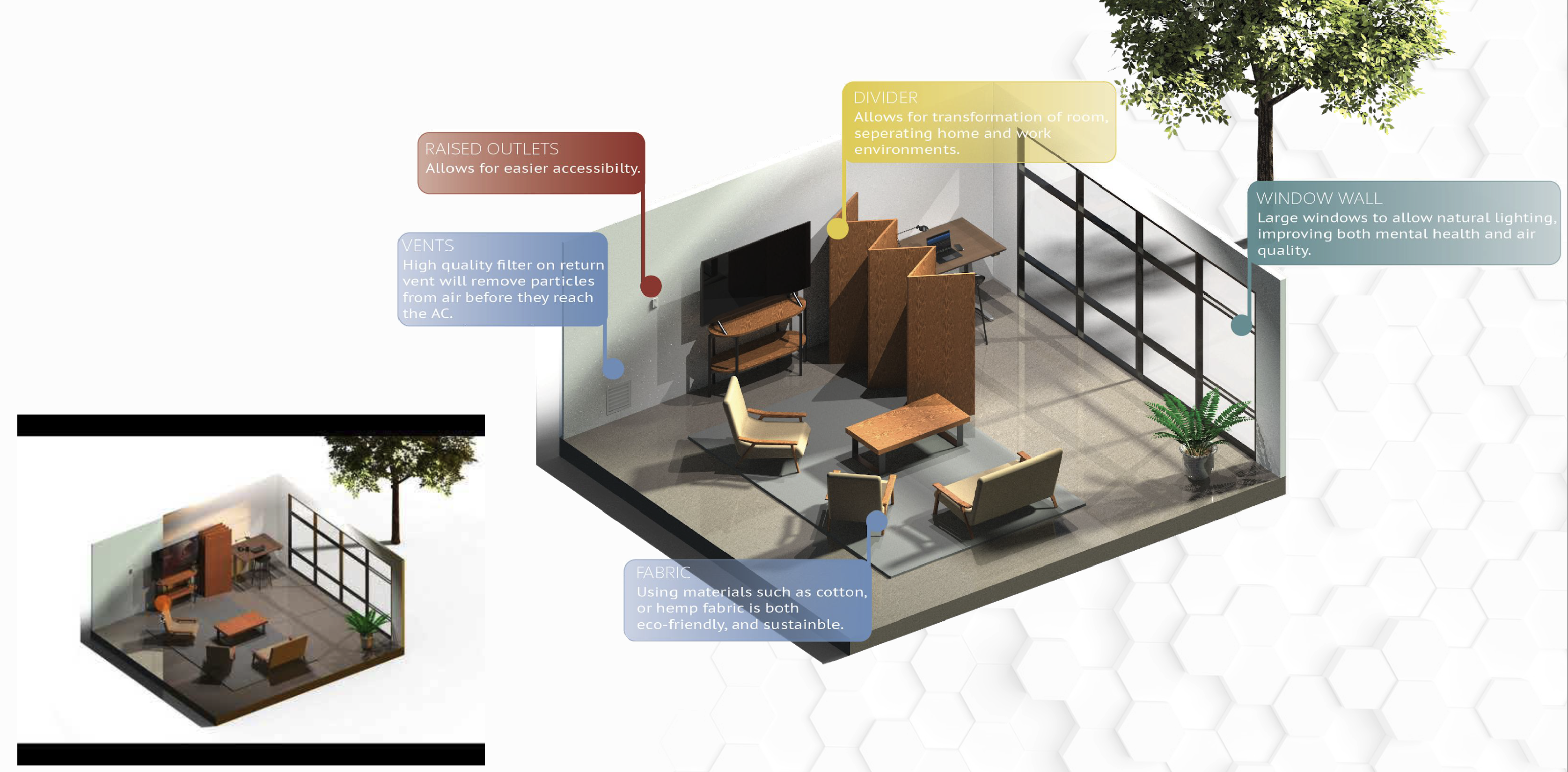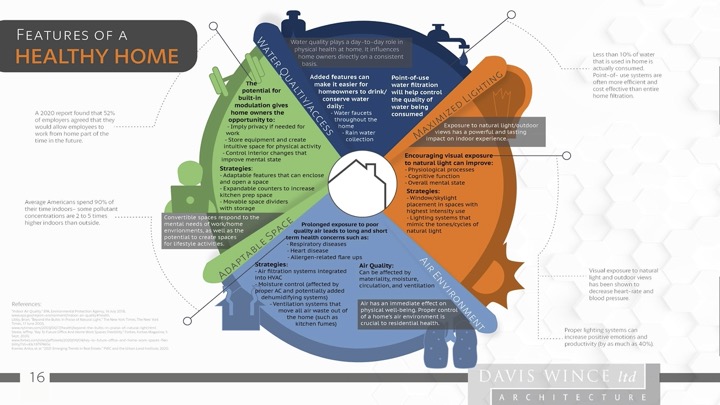by Jennifer M. Bobbitt

The Visual Innovation Studio (VIS) project challenged a group of 25 University of Cincinnati students to explore two primary questions. First, how can a healthy home environment improve its inhabitants’ social, health, and economic, mental well-being? And second, how does the design of a healthy home fit into and enhance the Healthy Urbanism™ formula? Wellogy (formerly Davis Wince, Ltd.) provided architects and planners to support the students by responding to their questions and providing additional information.
“I learned a lot about the design process through this project. Aaron Bradley, our faculty advisor, taught us to ‘fall in love with the problem’ before we even started forming solutions. By doing so, we could fully understand what needed to be addressed and had something to fall back on when revising the project,” according to Natalie Kunes, University of Cincinnati Urban Planning student.
University of Cincinnati Associate Professor Aaron Bradley teaches the popular innovation class and is well known to his students for challenging their thinking and pushing them outside their comfort zone of ideas.
“I’m constantly surprised at the effort it takes to get them (students) to push past the ‘safe’ answers at early stages of an innovation project. I think that by the time they get to university, they’ve had years and years of very linear approaches to education and a lot of classroom situations where there’s ultimately only one “right” answer that the test or the teacher has set up. Creative problem solving implies that there are multiple ‘right’ ways to solve a problem. Over the years, I’ve come to expect this, so I build in a lot of early work in this area at the start of every new project with students. As they get more comfortable with the idea that it’s OK (in fact, it’s encouraged) to push past boundaries and propose bold ideas, the creative process always gets a lot more fun, and the results are more impactful,” Bradley said.
The students were divided into teams, each consisting of multiple disciplines, and started their research and exploration. Each week, Wellogy staff interacted with the students numerous times to help ensure the project moved forward and involved complete information and mentorship.
“This virtual class setting, although not conventional, was the perfect think tank for possibilities. The past year has taught us to listen, learn and be open to new ideas and opportunities,” according to Kathy Kelly, Wellogy architect and Director of Strategy. Kelly was actively involved with the students every week as they researched and looked for ideas.
Chloe Pi, University of Cincinnati Industrial Design student, Class of 2024, said the research and design phase also sparked new ideas for her.
“I learned a lot about the research phase within the design process. I learned that topics unrelated to the prompt you have been given can be helpful and that it does not have to directly relate to the subject matter. It can be something as simple as understanding more about human behavior,” Pi said.
At the end of the five weeks, the students compiled their research findings and insights and packaged their graphics into a well-orchestrated presentation. Wellogy architect Gary Gray was impressed with the level of detail to which the students explored the healthy home idea.
“From materials like copper handles to reduce the transmission of bacteria and adjustable height bathroom counters and cooktops, the students addressed the adaptations for a healthier home and aging in place options,” Gray said.

Wellogy architects Gray and Kelly agreed; they learned a lot from their experience as mentors and found the information the students created very inspiring and innovative. The designs have sparked new conversations and ideas both in architecture and for aspiring students.
“There are things that have influenced what I envision my future home(s) to be like. I can incorporate small things into a current residence or bigger things like the kind of materials I use. But on a broader scale, how can I be more conscious of how my home functions with surrounding homes and communities,” Kunes said.
Bradley noted that this class was different due to COVID-19 related restrictions put on students this semester.
“Bringing us a challenge that has the potential for real impact was paramount. All too often students are given a very constrained problem set to work with, and the output is very tactical (redline a set of plans, design a logo, etc.). It was great to work on a challenge that asks larger questions of human behaviors and human futures,” according to Bradley.

